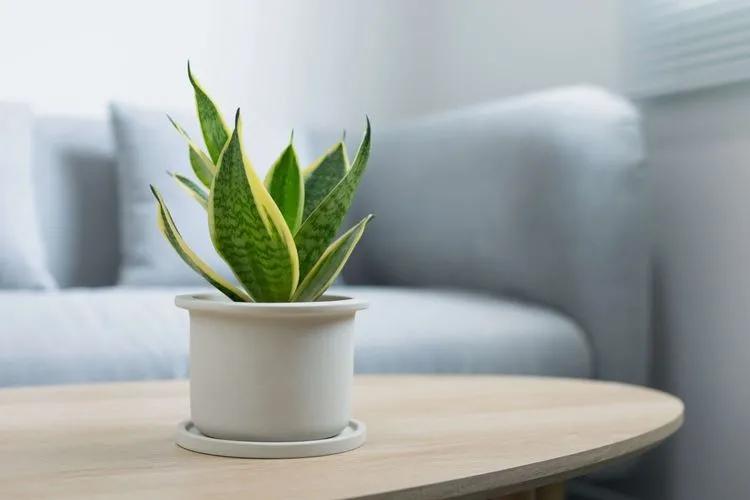 Snake plant (Sansevieria trifasciata or Dracaena trifasciata) is one of the most common and low-maintenance houseplants. It also acts as an air purifier to improve your home’s air quality.
Snake plant (Sansevieria trifasciata or Dracaena trifasciata) is one of the most common and low-maintenance houseplants. It also acts as an air purifier to improve your home’s air quality.
Basics
This plant is native to Africa and Asia, it belongs to the Liliaceae family. Two varieties are usually cultivated mainly: a tall one with sword-shaped leaves, and a short one with the leaves forming a rosette. Leaves are dark green with lighter colored transverse bands and yellowish edges.
Full description:
Scientific name: Sansevieria trifasciata (the best known); Common names: Tiger's tongue, cow's tongue, mother-in-law's tongue, cat's tongue, tiger's tail and sword of Saint George; Size: in a medium pot, the leaves reach 40-50 cm; Maintenance difficulty level: very easy; Irrigation need: little; Light: abundant.
Sansevieria is an easy plant to grow and a natural survivor in any space: it withstands high temperatures, cold, and drought. Nevertheless, you’d better protect it from frost.
Benefits
Sansevieria, also known as mother-in-law's tongue, is one of the plants recommended by NASA to eliminate airborne toxins. Check our article on plant air purifiers to learn more.
The Tiger's tongue is also known for:
- Its ability to absorb carbon dioxide and emit oxygen,
- It increases our capacity for concentration and productivity,
- It is able to control humidity in a closed environment, thus avoiding numerous diseases.
- It also removes xylene, benzene, formaldehyde, and trichlorethylene from air. These are substances that cause asthma, dizziness, drowsiness, increased frequency, tremors, and skin irritations.
Caring tips
The Saint George's sword prefers well-drained, light, sandy soils. It needs sunshine or bright light to fully develop. The best place for this plant is near a south- (north-) facing window. Due to its origin, Mother-in-law's tongue adores heat. Your Sansevieria will thrive in temperatures of 12°C (55°F) to 30°C (85°F) degrees.
How to plant it in the pot?
 As for the ideal planting time, it should be transplanted in March and April (Spring). To pot the Snake plant follow these steps:
As for the ideal planting time, it should be transplanted in March and April (Spring). To pot the Snake plant follow these steps:
- Choose a pot (with a hole in the bottom), neither too small nor too large, to allow the rhizomes and roots on the surface to take their place.
- Prepare a mixture of 2/3 soil and 1/3 sand. Lay out a bed of clay or gravel balls or a few pieces of sandstone to promote drainage.
- Cover with a little of the mixture of 2/3 of potting soil and 1/3 of sand, being careful not to bury the neck. The collar must remain level with the ground.
- Fill it with the rest of the soil and tamp well.
- Water moderately, leaving no water in the container.
Note that they like to grow up in cramped conditions. Transplant it in the spring, about every 3 to 4 years in a slightly larger pot, at a height of 2 to 3 cm. from the soil, being careful not to damage the surface roots.
Watering
Water it moderately and regularly, on average once a week. Wait until the surface of the soil is dry before watering again, and never leave standing water in the saucer. Be careful not to give it too much moisture, which causes the roots to rot. In winter, let it rest: reduce watering considerably and let the soil dry much more deeply. Use lukewarm water that will not cause thermal shock. Calcareous will not affect it. Apply a diluted green plant or cactus fertilizer every 3 weeks.
Light
Although it is very resistant, the ideal is to place it in places with a lot of light. Never use a foliage brightener. Place the sansevieria in a more suitable place and apply an appropriate fertilizer.
Pruning
Pruning is not necessary. Simply remove damaged and yellow leaves on the fly by cutting them at the base with a clean, sharp knife.
